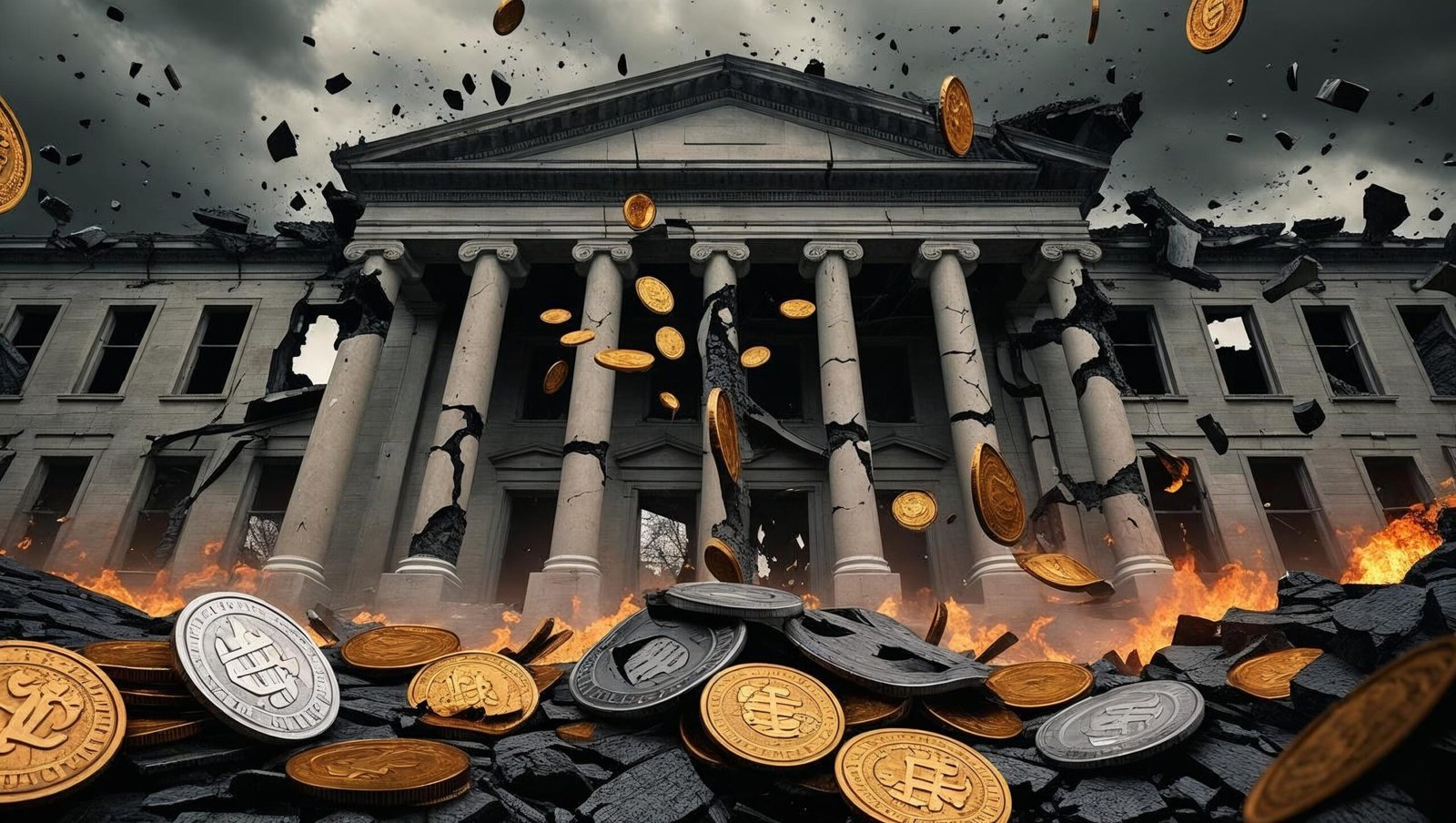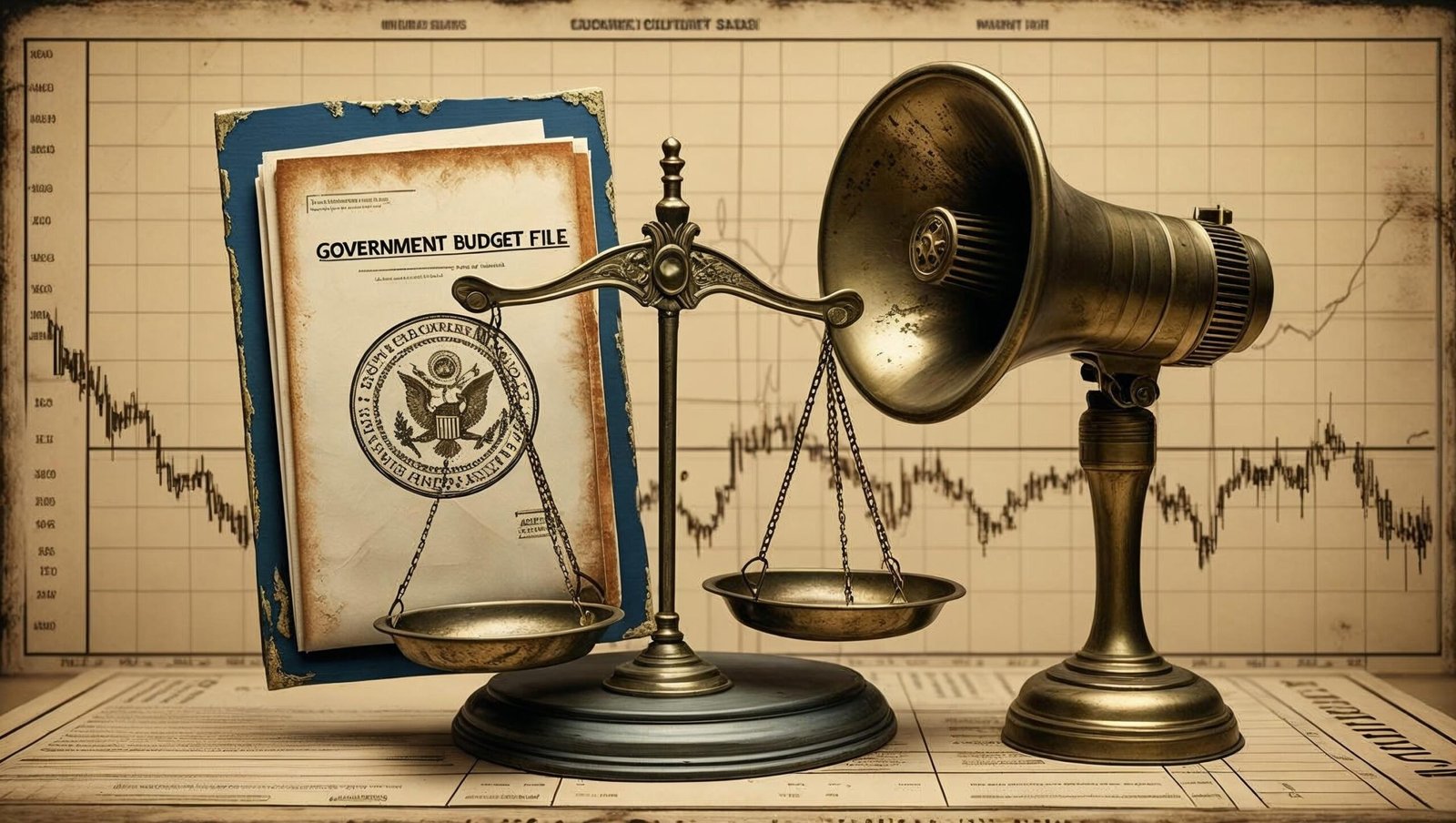Introduction
How Countries Go Broke by Ray Dalio is not merely a book—it’s a warning siren echoing through the fiscal corridors of every nation-state. In this comprehensive review, we dive deep into Dalio’s framework for understanding why once-thriving economies crash, how political misjudgments accelerate financial ruin, and what can be learned from the past to avoid repeating the same catastrophic errors.
Ray Dalio, the acclaimed founder of Bridgewater Associates and the author of Principles, offers an unparalleled insight into the inner workings of sovereign debt, central bank blunders, and the often-overlooked symptoms of national insolvency.

1. The Premise of “How Countries Go Broke by Ray Dalio”
At the heart of How Countries Go Broke by Ray Dalio lies a rigorous diagnosis of how governments, despite vast access to monetary tools and historical precedence, fall prey to the same financial illnesses. Dalio begins by drawing parallels between personal debt and national debt, pointing out how irresponsibility at both levels spirals into unmanageable consequences.
He examines fiscal irresponsibility, political populism, and denial as major contributors to sovereign defaults. In How Countries Go Broke by Ray Dalio, these themes are not treated abstractly—they are grounded in real-world data, examples, and economic cycles that have repeated for centuries.
2. Historical Case Studies: A Pattern of Collapse
Dalio’s strength lies in pattern recognition. In How Countries Go Broke by Ray Dalio, he presents detailed case studies from Argentina, Venezuela, Greece, Zimbabwe, and even post-war Germany. The recurring pattern? Governments printing money to pay debt, which triggers hyperinflation and eventually, economic collapse.
In the book, the reader is walked through the phases of a debt cycle—from accumulation to explosion. Dalio does not merely recount these stories; he decodes them. Every page of How Countries Go Broke by Ray Dalio echoes with the message: “Ignore history and you will pay its price.”
3. Warning Signs of a Collapsing Economy
One of the most impactful chapters in How Countries Go Broke by Ray Dalio outlines warning signs that precede fiscal doom:
-
Unsustainable debt-to-GDP ratios
-
Currency devaluation through uncontrolled printing
-
Reliance on foreign capital inflows
-
Central banks losing credibility
-
Populist economic policies
Dalio emphasizes that countries seldom go broke overnight. Instead, they walk slowly, arrogantly ignoring red flags until it’s too late. As described in How Countries Go Broke by Ray Dalio, leaders often disguise the symptoms of collapse with short-term measures that exacerbate the long-term damage.
4. The Role of Central Banks: Savior or Saboteur?
One of the most controversial and enlightening insights in How Countries Go Broke by Ray Dalio is his take on central banks. Dalio argues that central banks, while designed to provide stability, can become the very institutions that destroy an economy if politically compromised.
He describes how low interest rates and quantitative easing can be double-edged swords. While they can stimulate growth, overuse leads to inflation, loss of investor confidence, and ultimately, capital flight. How Countries Go Broke by Ray Dalio is blunt: “No institution is above error—not even the Federal Reserve.”
5. Political Mismanagement: When Ideology Defeats Economics
Another hard-hitting chapter of How Countries Go Broke by Ray Dalio addresses how politicians often sacrifice sound fiscal policy for votes. Dalio cites numerous cases where populist leaders introduce unsustainable subsidies, universal income schemes, or cut taxes without balancing the budget.
He warns that economic collapse is often not caused by lack of knowledge, but by political cowardice or ideology. In How Countries Go Broke by Ray Dalio, readers are reminded that every economy operates on trust—and once that trust erodes, panic ensues.

6. Lessons from Resilience: Countries That Recovered
It’s not all doom. How Countries Go Broke by Ray Dalio also highlights cases of recovery and resilience. Dalio discusses how nations like South Korea, Chile, and even Germany post-WWII managed to reverse their downward spirals.
Key themes in these recoveries include:
-
Institutional reforms
-
Transparent fiscal policy
-
Independent central banks
-
Trade-based economic growth
-
National unity over populism
These examples reinforce Dalio’s belief that while going broke is tragic, recovery is always possible—with the right leadership and policy correction. How Countries Go Broke by Ray Dalio encourages policymakers to use crisis as a springboard for reform.
7. Dalio’s Principles for Economic Survival
The final section of How Countries Go Broke by Ray Dalio offers a blueprint to avoid collapse. Among the recommendations are:
-
Don’t live beyond national means
-
Educate citizens on economics
-
Ensure the central bank is politically independent
-
Be brutally honest about debt and inflation
-
Preserve long-term trust over short-term gain
These principles mirror Dalio’s personal framework from his earlier works but are tailored here to the macroeconomic scale. How Countries Go Broke by Ray Dalio ends with a sobering reminder: “Nature forces balance—either proactively or destructively.”
Understanding the Invisible Thread: Economics, Power, and Society
The collapse of a country’s economy is never purely financial. Beneath the statistics and currency values lies a tangled mesh of psychological, cultural, and geopolitical factors. To understand national insolvency in its full complexity, one must view it not only through the lens of GDP and debt but also through the human condition.
Economies do not function in a vacuum. They are products of belief systems, shaped by the trust citizens have in their institutions and the competence of those in power. The fraying of that trust often precedes, or even accelerates, financial breakdown. A society in which corruption festers, truth is suppressed, and leadership is short-sighted becomes vulnerable long before the numbers start to signal trouble.
Leaders are often faced with competing imperatives: to maintain political popularity, to serve short-term electoral needs, or to uphold long-term fiscal health. The tension between these goals frequently leads to decisions that may delay collapse temporarily but intensify its eventual severity.
History teaches that economic crashes are rarely technical failures alone. They are moral failures too—failures of accountability, of foresight, and of courage.
Debt as a Mirror of National Priorities
When nations accumulate debt, they are essentially mortgaging the future for the present. While all economies require borrowing to finance development and infrastructure, the distinction between productive and unproductive debt is critical. Borrowing to invest in education, public health, and infrastructure can yield long-term dividends. But debt taken on to sustain unsustainable subsidies, plug fiscal holes, or appease political factions weakens the nation’s foundation.
There is also the psychological dimension of national debt. Once citizens normalize deficit spending, they become less vigilant. Voters stop asking questions. Politicians, sensing less resistance, keep inflating budgets. It becomes a feedback loop of irresponsibility. The illusion of stability persists—until creditors stop lending, inflation erodes savings, and currencies lose their credibility.
Financial collapse, then, is not a sudden event. It’s the final consequence of years—often decades—of collectively tolerated mismanagement.
The Role of Financial Literacy in National Stability
One striking pattern in countries that experience fiscal collapse is the low level of financial awareness among the populace. When people do not understand inflation, deficit financing, or the true cost of subsidies, they become susceptible to economic populism. Politicians can promise everything—cheap fuel, free education, tax cuts—without facing proper scrutiny.
By fostering financial literacy among citizens, nations inoculate themselves against such short-sighted policies. A financially literate population can act as a check on fiscal indiscipline. Citizens who understand how government borrowing affects their savings and future taxes are more likely to demand transparency and accountability.
Education systems worldwide have an opportunity—and responsibility—to embed economic literacy into their curricula. Not as an abstract discipline but as a practical tool for civic empowerment. When voters understand the mechanics of economic policymaking, they become less likely to support leaders who trade long-term health for short-term applause.

Currency Confidence: The Invisible Asset
The collapse of a national currency is often the most visible and traumatic symptom of economic breakdown. People wake up one morning and discover that their life savings have been devalued overnight. Prices surge, wages lag, and basic necessities become unaffordable. In such times, the erosion of trust in the national currency becomes a psychological crisis as much as a financial one.
Currency holds value not just because of what it can buy, but because people believe others will accept it. That shared belief—across citizens, traders, and foreign partners—is the foundation of all modern monetary systems. When that belief cracks, panic spreads fast.
Safeguarding the credibility of a nation’s currency is therefore not merely a task for economists or central bankers. It’s a collective undertaking—requiring policy discipline, institutional transparency, and a deep sense of responsibility across all branches of government.
Institutional Integrity and the Cost of Corruption
When institutions become weak—when regulators are compromised, courts are politicized, and watchdog agencies are underfunded—the ability of a country to enforce sound economic policy collapses. Corruption, far from being a moral failure alone, becomes a structural threat.
It leads to revenue leakages, inefficient spending, and misplaced priorities. More importantly, it breaks the psychological contract between the government and the governed. Why would citizens pay taxes honestly when they see officials enriching themselves? Why would foreign investors trust a country that cannot guarantee legal redress or contractual enforcement?
Restoring institutional credibility takes time. But it begins with clear accountability, public audits, and a zero-tolerance policy toward financial malpractice. Countries that have emerged from economic crises have done so, in part, by rebuilding the institutional pillars that support responsible governance.
Globalization and the Risk of External Dependence
In today’s interconnected world, countries often rely heavily on foreign capital, international markets, and global supply chains. While globalization offers opportunities for growth, it also exposes nations to shocks beyond their control. A sudden drop in commodity prices, a tightening of U.S. interest rates, or a regional conflict can cause domino effects that cripple fragile economies.
Prudent countries diversify their exports, build foreign exchange reserves, and reduce overreliance on short-term capital flows. They establish economic buffers and design policies that can absorb volatility.
The recent pandemic and subsequent global economic disruptions reminded the world that sovereignty without self-sufficiency is a fragile illusion. National resilience must be built into the economic architecture—not as an afterthought but as a guiding principle.
The Paradox of Economic Growth
It’s possible for a country to show impressive GDP growth while walking steadily toward collapse. This paradox is often missed by casual observers. Growth fueled by borrowing, asset bubbles, or unsustainable consumption does not reflect real health.
True economic strength is measured not only by how fast a country grows, but by the durability and inclusiveness of that growth. Are new jobs being created across income brackets? Are public services improving? Is the growth backed by productivity gains or just easy money?
Distinguishing between short-term expansion and long-term sustainability is one of the key messages policymakers and investors must internalize. Growth that masks fragility is a dangerous illusion.
Psychology and the Spiral of Panic
One of the most dangerous phases of any economic crisis is the psychological spiral that sets in when people lose confidence. When citizens rush to withdraw money, convert currency, or hoard essentials, it creates a self-fulfilling prophecy. Even countries with strong fundamentals can collapse quickly if public sentiment turns sour.
This phenomenon is not irrational; it reflects a survival instinct. But it also underscores the importance of timely, honest communication from governments and institutions. Denial, deflection, or data manipulation erodes public trust further. Transparency, even in times of bad news, can prevent the contagion of panic.
The book How Countries Go Broke by Ray Dalio touches upon this critical moment—when belief, not just numbers, determines the fate of a nation.

Ethics, Leadership, and Long-Term Thinking
Ultimately, no economic system can survive the erosion of values. Ethics and leadership are not external to economics—they are its foundation. A society where leaders are willing to make difficult choices, where public officials act with integrity, and where long-term thinking is rewarded will always be more resilient.
The world today is facing challenges that test every nation’s economic fabric. Climate change, technological disruption, demographic shifts, and political polarization all add new layers of complexity. But the core principles—discipline, transparency, accountability—remain timeless.
Final Thoughts
It is tempting to think of economic collapse as something that happens to “other” countries—those with corrupt regimes or extreme poverty. But history proves otherwise. Even wealthy, advanced economies are not immune to the dangers of poor policy, denial, and overreach.
What distinguishes those who endure from those who fall is not just what they earn or spend—but how they govern, how they adapt, and how they learn from history.
The insights offered in How Countries Go Broke by Ray Dalio serve as both a mirror and a map. A mirror to reflect on where we stand today. And a map for navigating the storms that may lie ahead.
What Makes This Book Timely and Urgent
In an era of rising national debts post-COVID-19, stimulus packages, war spending, and declining public trust, How Countries Go Broke by Ray Dalio feels less like a theory and more like a current affairs manual. It’s not just about economics—it’s about national destiny.
The relevance of How Countries Go Broke by Ray Dalio increases with every passing financial quarter. As emerging markets teeter and developed economies accumulate trillions in debt, Dalio’s book feels prophetic.
Critique and Literary Value
Stylistically, How Countries Go Broke by Ray Dalio is technical but readable. His explanations are aided by illustrations, graphs, and accessible metaphors. However, at times, the content can be overwhelming for non-economists.
Some critics argue that Dalio focuses too heavily on historical repetition and underplays variables like innovation and demographic shifts. Nevertheless, the strength of How Countries Go Broke by Ray Dalio lies in its clarity, consistency, and compelling logic.

Real-World Application for Readers
Whether you’re a policymaker, investor, economist, or an informed citizen, How Countries Go Broke by Ray Dalio has actionable takeaways. Understanding these economic red flags could help you protect your personal finances, interpret government policy better, and even prepare for future crises.
On shubhanshuinsights.com, we believe in promoting books that shape public understanding and foster informed debate—and How Countries Go Broke by Ray Dalio does exactly that.
Frequently Asked Questions (FAQs)
Q1: What is the main theme of How Countries Go Broke by Ray Dalio?
A: The book focuses on why and how nations collapse economically due to debt mismanagement, inflation, political failures, and central bank policy errors.
Q2: Is this book suitable for general readers?
A: Yes, while the book includes economic concepts, Ray Dalio explains them in a way that is accessible to readers without a background in economics.
Q3: Are the lessons from How Countries Go Broke by Ray Dalio applicable today?
A: Absolutely. With global economic instability and increasing sovereign debts, the insights are more relevant than ever.
Q4: Does the book offer solutions or just describe the problem?
A: It offers both. Dalio discusses practical frameworks to prevent and reverse national economic collapse.
Q5: Where can I buy How Countries Go Broke by Ray Dalio?
A: It’s available on all major online platforms such as Amazon, Flipkart, and at local bookstores.
Conclusion
How Countries Go Broke by Ray Dalio is a critical, eye-opening exploration into the anatomy of economic failure. It is not just a book about numbers or history—it is about choices. The choices nations make in times of prosperity determine how they fare in periods of crisis.
By reading How Countries Go Broke by Ray Dalio, you arm yourself with knowledge that goes beyond newspapers and headlines. You begin to see the matrix of global economics for what it is—a system of cause and effect driven by policy, trust, and discipline.
For readers of shubhanshuinsights.com, this review serves as a compelling call to understand, engage, and act. As Dalio warns, “The biggest risk is thinking it won’t happen to you.”